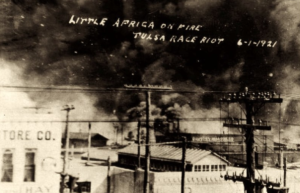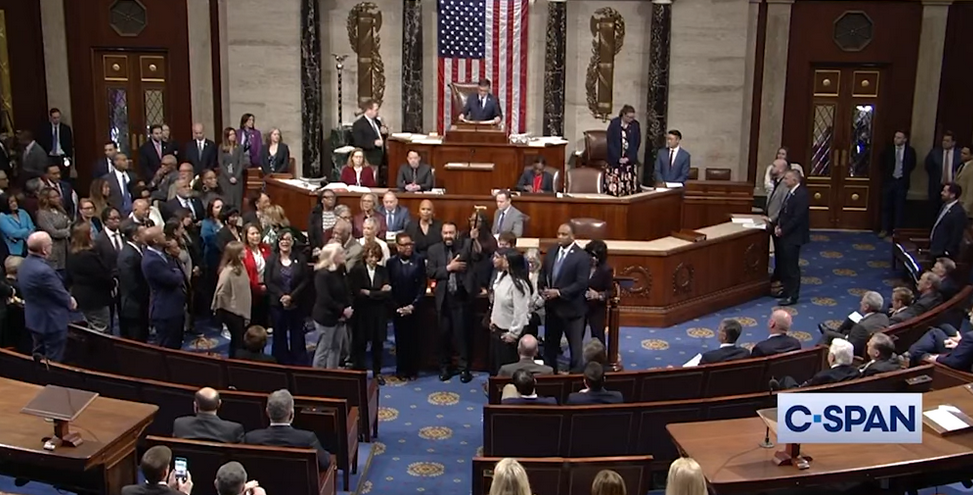Photo: Book Cover\YouTube Screenshots\Wikimedia Commons
In “Don’t Let Them Bury My Story,” Viola Ford Fletcher, now 109, shares her firsthand account of the Tulsa Race Massacre and calls on all Americans to never forget the horrific events of 1921.
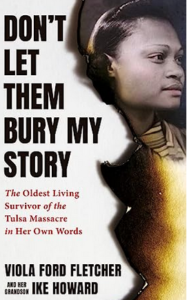
The oldest living witness to the massacre that destroyed the Tulsa neighborhood known as Black Wall Street, Mother Fletcher was just seven years old when white mobs attacked prosperous Greenwood Avenue.
Over two days starting on May 31, 1921, some historians estimate as many as 300 Black people were killed and 10,000 were left homeless. Greenwood, a thriving Black business district, was burned to the ground.
As Mrs. Fletcher’s family escaped in a horse-drawn buggy, she writes in her memoir, she saw a Black man being executed, his head exploded like “a watermelon dropped off the rooftop of a barn.”
The shooter had also fired at her family’s buggy.
“We passed piles of dead bodies heaped in the streets,” she writes. “Some of them had their eyes open, as though they were still alive, but they weren’t.”
Reports indicate that local authorities provided firearms and ammunition to the mob of thousands of white people who terrorized the entire Black community, deliberately shooting Black residents and burning homes and buildings.
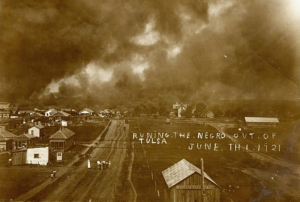
When the Oklahoma National Guard was called to intervene, they ignored the mob’s rampage and instead arrested hundreds of Black survivors.
Public officials failed to keep records of Black people who were wounded or killed. No one was held accountable for Greenwood’s devastation.
Mother Fletcher is on a mission to change that.
Together with two other known survivors of the massacre—Mrs. Fletcher’s younger brother, Hughes Van Ellis, 102, and Lessie Benningfield Randle, 108—she testified before Congress in 2021 and sued the city of Tulsa for covering up the attack, portraying Black victims as instigators of the violence, and profiting from the use of victims’ names and stories while survivors and their descendants continue to live in poverty.
“The questions I had then remain to this day,” Mrs. Fletcher writes in her memoir. “How could you just give a mob of violent, crazed, racist people a bunch of deadly weapons and allow them — no, encourage them — to go out and kill innocent Black folks and demolish a whole community?”
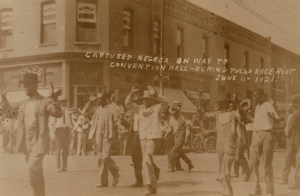
“Don’t Let Them Bury My Story” traces Mrs. Fletcher’s journey from the Tulsa massacre through the Great Depression of 1929, the Civil Rights Movement, and the election of President Barack Obama—to January 6, 2021, when she watched the mob attack on the U.S. Capitol.
“With that horrific scene, all of what occurred back in 1921 in Greenwood came flooding back into my mind,” she writes.
Mother Fletcher told the Associated Press that fear of reprisals kept her from speaking out for years.
“Now that I’m an old lady, there’s nothing else to talk about,” she said. “We decided to do a book about it and maybe that would help.”
She hopes the book will preserve the truth of what happened in Tulsa and inspire readers not to give up on the struggle for truth and justice.
“I will never forget the violence of the white mob when we left our home. I still see Black men being shot, Black bodies lying in the street. I still smell smoke and see fire. I still see Black businesses being burned. I still hear airplanes flying overhead. I hear the screams,” Mrs. Fletcher told Congress in 2021.
“I have lived through the massacre every day. Our country may forget this history, but I cannot.”
